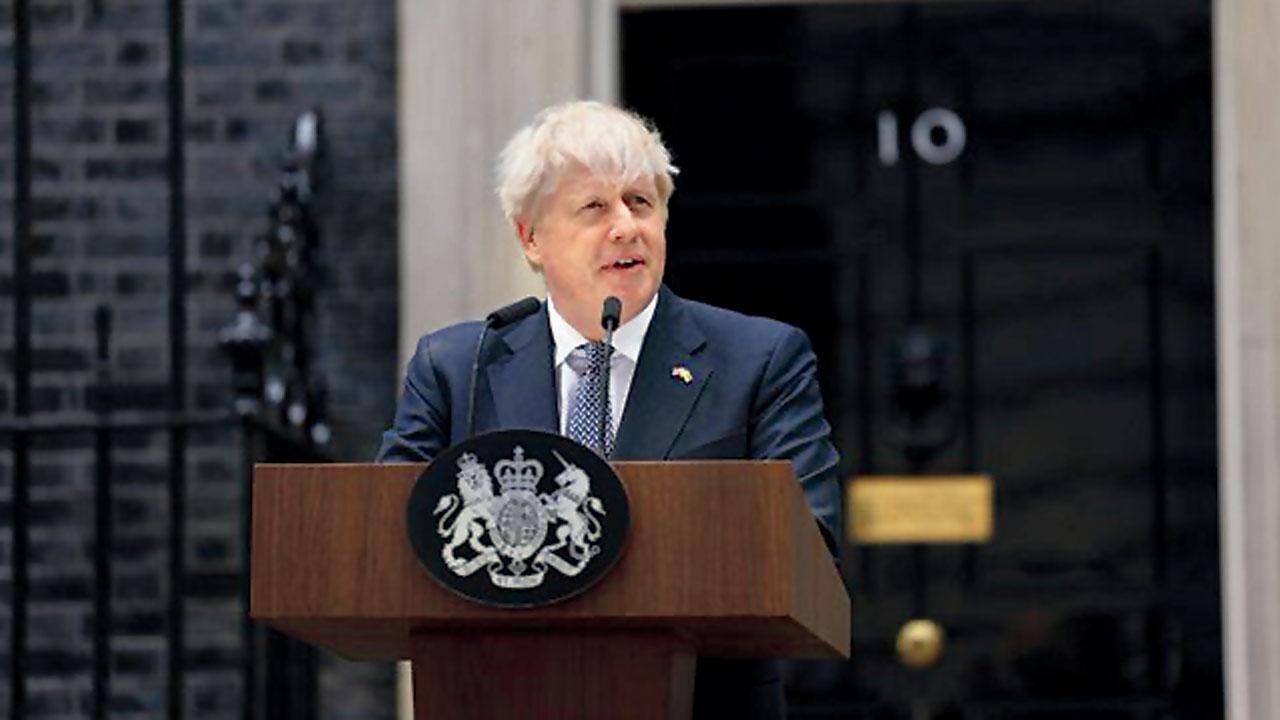The recent events in Sri Lanka and the UK have opened the eyes of the world to the dangers of a leadership vacuum. Business coaches and leaders decode how the corporate world can deal with such systemic changes

Protesters gather inside the premises of the Sri Lankan presidential palace. Pic Courtesy/Getty Images
As thousands of protestors stormed into the presidential palace of Sri Lanka last week, the world watched on in disbelief. The island nation has fallen into anarchy in the absence of a President, a Prime Minister, or a stable government to run affairs. Meanwhile, in the United Kingdom witnessed a messy turn of affairs with Boris Johnson resigning as Prime Minister while the nation waits to select a new leader. In the corporate space, both scenarios would equate to mismanagement.
ADVERTISEMENT
A secure structure
A key element of any corporate organisation is the endemic system that prevents a collapse. Guncha Khare, cultural director of the Mumbai-based co-working space Dextrus, says, “It is important to create systems and processes that aid employees to own their roles and understand what needs to be done during a crisis. It is like an ever-evolving guide book.”

Boris Johnson announcing his resignation on July 7, 2022. Pic Courtesy/@BorisJohnson on Twitter
This structural plan is akin to the constitution of a country, Sumit Kumar, chief business officer for Teamlease Education Foundation, tells us. “A leader can make a difference with their vision, leadership style, but it cannot be that the entire institution implodes in their absence,” he explains. Such a plan requires a vision for the future, he adds.
“If the idea is to go for a long haul, then business leaders must take care of these things. It is crucial for the organisation to have a vision, an alternative or a strategy in place,” Kumar emphasises.
Open and transparent
For a vision to translate into success, it needs to be embedded into the work culture. Khare points out that this is possible only when leaders include team members in their decision-making process. “When you are building something, things change and evolve. You have to keep an open mind to these changes. Otherwise, you are building a culture that is not inclusive,” Khare adds.

Guncha Khare, Niraj Bora and Sumit Kumar
Kumar is more direct. Using the analogy of the Armed Forces, he says, “Like a second-in-command, business leaders often choose a hierarchy they trust. That team or person should know of, and be aligned with the vision and objectives of the company. As a leader, it is imperative that you take your second-in-command in confidence.”
Such inclusivity also depends on the recruitment and hiring process. Niraj Bora, founder of Surmount Business Advisors, a private equity firm, points out, “One has to keep an eye on people who will contribute to the organisation over a long term and step into responsible positions when they are needed.”
Let go of the ego
A major hurdle in the way of such mentoring could be the ego or the leader themselves. Khare warns that this is a difficult task, but detrimental if ignored. She says,” There is no space for ego when you are trying to build a business culture that is open and transparent. It is important for leaders to know when to let go and only be there when required.” While leaders ought to lead by example, Khare believes it is important to designate and allow team members to make mistakes and learn from them. “It gives the team confidence and motivation. It also shows that the organisation trusts their abilities.”
Bora notes that most organisations are structured to avoid complete reliance on one individual. In any crisis, there are multiple leaders like a CEO or a CFO who can step up in a contingency. “The key is that they are all aware and clued into the functioning of the company,” he says.
Communication is key
Kumar believes that in any situation, leaders must communicate the nature of the problem to the teams under them. “Communication describing the situation, and how the organisation is geared to handle it, has to be very clear. It needs to instill confidence among the employees. The timing and the message are key to stabilising any disturbances,” he said.
Bora agrees, and says that there will always be uncertainty in the team when a leader is replaced, resigns or is removed. It is important to address it quickly. “On most occasions, the top management steps in,” Bora clarified. In the end, Khare says, it all comes down to the leader. “It is all about being open and diligent, and deciding what kind of a culture you wish to create for the future.”
 Subscribe today by clicking the link and stay updated with the latest news!" Click here!
Subscribe today by clicking the link and stay updated with the latest news!" Click here!







